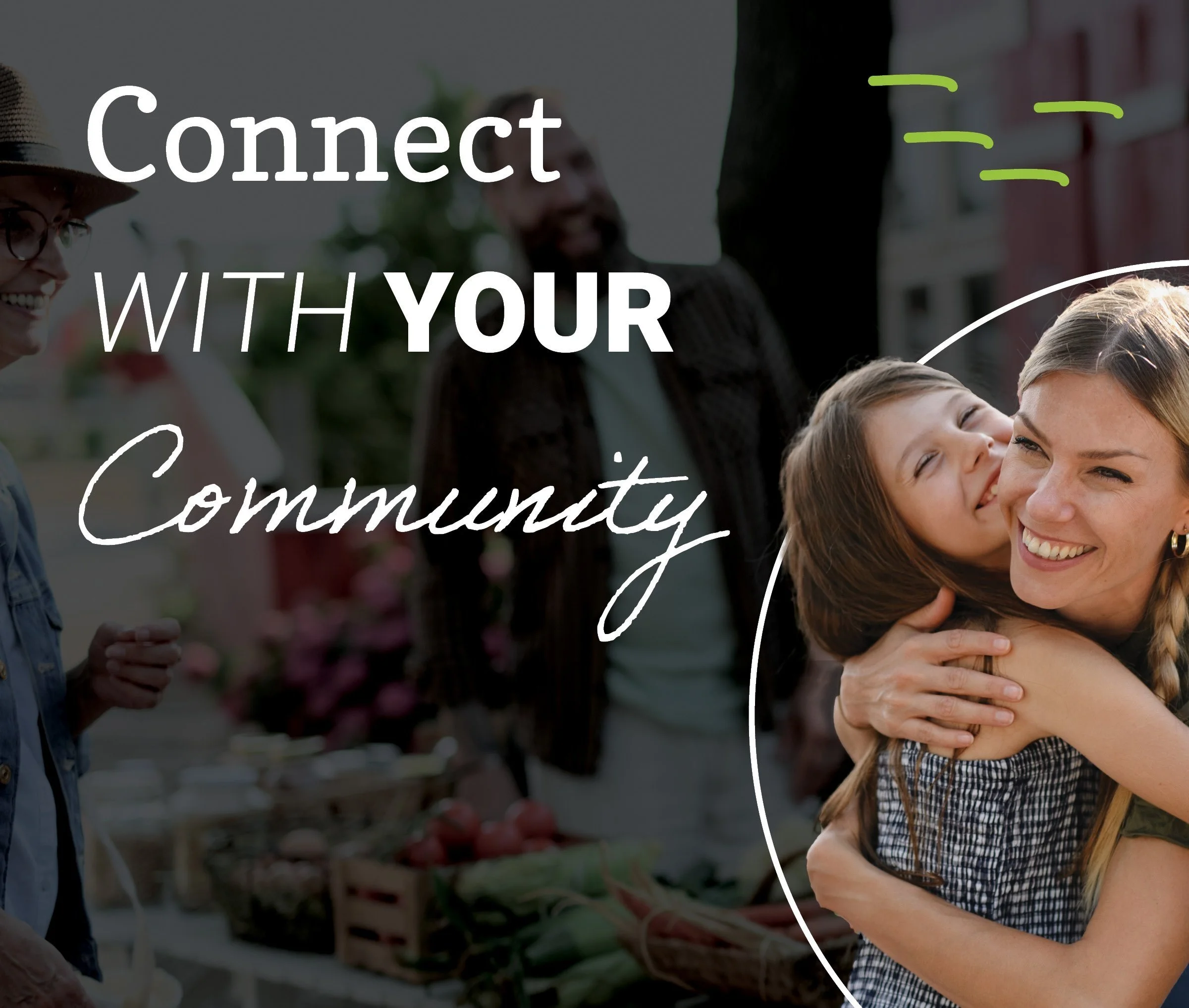Connecting with Your Community
This #mentalhealthmonth, LifeWays, along with Mental Health America, invites you to #LookAroundLookWithin to learn about how your surroundings can impact mental health.
A strong sense of community withing neighborhoods protects mental health through shared support, resources, and joy.
ACCESS TO QUALITY RESOURCES
One of the biggest ways your location can impact your mental health is how easy or hard it is to access the things you need. This includes healthy food, safe outdoor space, quality medical care, and public transportation.
WHAT CAN I DO TO GET ACCESS?
Get to know your neighbors.
The people living around you can be a big help when you need something. You can support each other with carpools, running errands, or sharing resources.
Connect with a group in your area where community members share and exchange services.
You may be able to find an organized mutual aid program, or you can search for a local Facebook or NextDoor group focused on community support.
PROTECT YOUR NEIGHBORHOOD FROM GENTRIFICATION AND POVERTY
Gentrification is when a low-income neighborhood quickly changes as wealthier people and businesses move into the area. This often forces out long-time residents and businesses as rent, mortgages, property taxes, and the general cost of living rise.
WHAT CAN I DO TO PROTECT MY NEIGHBORHOOD?
Support local businesses.
Locally owned businesses – from coffee shops to grocery stores to home services – keep communities going. By shopping locally, you help them stay open.
Stay connected.
If you are forced to relocate, try to stay connected to your original community or the people you knew from it. Many gentrified neighborhoods previously had a strong community identity and culture, and maintaining those social ties can protect your mental health.
SOCIAL CONNECTION
Feeling a sense of connection is crucial for your mental well-being. While you can find this with many people and in many places, the people you live near can provide community and social support. Your physical closeness to neighbors allows for spontaneous interactions and shared interests, which can lead to genuine friendship. Strong community among neighborhoods and nearby residents protects mental health through shared support, resources, and joy.
WHAT CAN I DO TO MAKE NEARBY SOCIAL CONNECTIONS?
Be a friendly neighbor.
It seems obvious, but taking the first step to wave or say “hello” can be the beginning of a fulfilling connection. You can also try to organize group gatherings.
Seek out places within your neighborhood or town.
Where can you find safety, comfort, or connection? Think outside of the box of where you can find people with similar interests or commonalities to you. These could be parks, places of worship, barber shops, tattoo parlors, cafes, or libraries.
COMMUNITY SAFETY
There are many reasons people might feel unsafe in their local surroundings, including violence and mass shootings, police presence and brutality, and discrimination and harassment. These safety concerns may prevent people from engaging in outdoor or community activities, which can be harmful to physical and mental health. Even if you haven’t dealt with fear or violence yourself, witnessing or hearing about it can still impact you.
WHAT CAN I DO TO FEEL SAFE IN MY COMMUNITY?
Focus on community care.
Crime occurs in areas where people don’t have their needs met. While you can’t fix everything, you can take part in keeping your neighborhood safe by providing support and resources and advocating for harm repair over punishment.
Identify safe people.
Being prepared can help alleviate anxiety and fear. Know who your allies are and who you can count on if you find yourself in danger.
---
Source: Mental Health America


